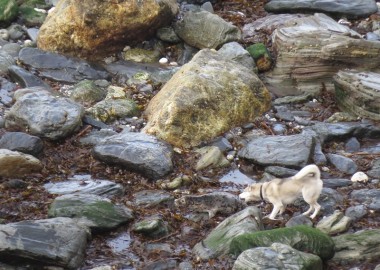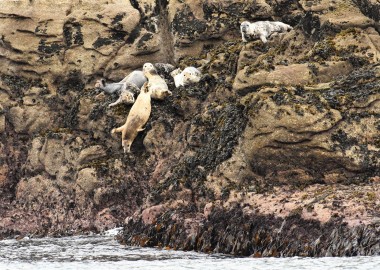Do not disturb!
CSGRT, as a member of the Seal Alliance, have just issued a press release about a collaborative report highlighting the shocking and chronic levels of disturbance impacting seals across the UK.
We aim to reduce the effects of human activity by raising public awareness about how to enjoy and get the best views of our special and captivating marine life without disturbing it.
You can download the report by clicking here
Do not disturb! The growing threat to our seals
As the summer holidays begin, millions of British and international visitors flock to popular coastal destinations around the British Isles. The increasing popularity of ‘staycations’ and higher numbers of visitors from overseas, crowding around our coasts adds huge pressure onto our wildlife, especially seals.
A new report released today entitled ‘Please Do Not Disturb! – issues of seal disturbance in the United Kingdom’, along with shocking and dramatic film footage and photographs, highlights the growing, harmful impact that human activity is having on our globally rare and important seal populations.
Funded by the Seal Protection Action Group (SPAG) and the Cornwall Seal Group Research Trust (CSGRT) for The Seal Alliance, the report documents case studies around the British coast where our protected seal populations are suffering chronic disturbances from human activities, deliberate or accidental, often causing serious injury and with potentially fatal consequences.
The report catalogues serious incidents in the South-west of England; North-west Wales; North-east England and North-east Scotland at sites of critical importance to these beautiful and intelligent marine mammals – key areas seals use for resting, socialising, breeding and moulting.
The researchers found compelling evidence that our seal population is suffering chronic disturbance issues from human intrusion, both accidental and deliberate, through recreational activities as well as expanding tourism. These disturbances come from motorised vessels, jet-skis, kayaks, paddle -boarders, wildlife watching tours on land or sea, anglers, walkers, dogs on and off leashes, drones, light aircraft, helicopters and even commercial wildlife photographers. People trying to feed seals is also of growing concern.
Please keep dogs on leads around seals Pregnant female tombstoning, scared by boat getting too close
‘Our seals are under increasing threat from deliberate killing, climate change, over-fishing, toxic pollution, entanglement in nets, ingestion of plastic and serious injury from collisions with vessels’ said Andy Ottaway of SPAG, “We need to give all our precious marine wildlife, including seals, more space. The cumulative impact of all these threats, along with these growing disturbance issues, is placing these wonderful animals at serious risk’
The report warns that repeated disturbance can do serious harm to individual animals, through stress and even serious injury while fleeing human presence or from attacks by dogs. Disturbance can also impact at a local and national population level by reducing breeding success, abandonment of dependent pups and even premature death.
The campaigners want to see more protection of essential habitats for seals through the expansion and enforcement of effective voluntary Codes of Conduct at a local level. Changes to national legislation are needed to regulate the growing wildlife watching tourism industry and ensure it is conducted both responsibly and sustainably, following ‘best practice’. The Seal Alliance have written to Secretary of State for the Environment Michael Gove, asking for a meeting with Defra officials to discuss how this might be best achieved.
‘Many communities benefit financially from tourism and the kind of reliable wildlife watching that seals provide. However, we need to take care and must reduce already high levels of disturbance, and soon, or those environmental, social and economic benefits could soon disappear along with our seals’ said Sue Sayer.
-ends-
For further information and stills and video of seal disturbance please contact:
Andy Ottaway of Seal Protection Action Group on [email protected]
Sue Sayer of CSGRT on [email protected]
Katie Bellman of CSGRT on [email protected]




